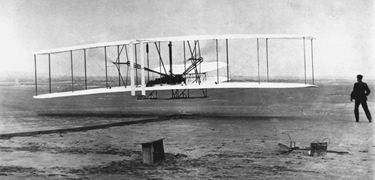

 The Accurate Reloading Forums
The Accurate Reloading Forums  THE ACCURATE RELOADING.COM FORUMS
THE ACCURATE RELOADING.COM FORUMS  Other Topics
Other Topics  Aviation
Aviation  Anyone of you ever have to do this?
Anyone of you ever have to do this?Go  | New  | Find  | Notify  | Tools  | Reply  |  |
| one of us |
Looks painful! http://www.freerepublic.com/fo...f-chat/2739194/posts There is hope, even when your brain tells you there isn’t. – John Green, author | ||
|
| one of us |
I've jumped out of them but only by choice. Those are far more dramatic ways to leave an airplane. | |||
|
| One of Us |
I was involved in the aftermath of an ejection at Fallon NAS, NV in 1972. A Navy A7 was returning from a practice bombing mission on the Fallon range. On final approach the pilot reached up to pull down his visor. Instead of grabbing the visor, he got the curtain for ejection. After pulling the curtain over his face, off he went. The plane made a perfect approach to the runway, and then pulled up, turned East and climbed to about FL20. Meanwhile the pilot floated down to a safe landing near the runway. We scrambled Air Force fighters to intercept and possibly shoot down the now pilotless aircraft. Before the fighters reached the plane, it ran out of fuel and crashed in a remote part of Utah. | |||
|
| One of Us |
Guy I knew punched out of a Tomcat, but he was too low. Hit the ground in his seat. Hell of it was, he had over 2000 skydives. Another guy I know, or knew, punched out of a Mohawk over Vietnam. Martin Baker seat. He said it shortened his overall height two inches and he had to roll up his pants cuffs for months. From what I understand, only a slight majority of ejections are successful. That was once the case. Not sure now. | |||
|
| one of us |
Some ejection trivia for you. In the early 1960s, deployment of rocket-powered ejection seats designed for use at supersonic speeds began in such planes as the Convair F-106 Delta Dart. Six pilots have ejected at speeds exceeding 700 knots (1,300 km/h; 810 mph). The highest altitude at which a Martin-Baker seat was deployed was 57,000 ft (from a Canberra bomber in 1958). Following an accident on 30 July 1966 in the attempted launch of a D-21 drone, two Lockheed M-21[5] crew members ejected at Mach 3.25 at an altitude of 80,000 ft (24,000 m) The pilot was recovered successfully, however the observer drowned after a water landing. Despite these records, most ejections occur at fairly low speeds and altitudes, when the pilot can see that there is no hope of regaining aircraft control before impact with the ground. The lowest Altitude ejection ever recorded was from 35' below water. I can't remember the plane but I think it was an A-7 on a cold shot. The bird went into the drink and the pilot was trapped and sinking so pulled the handles. The seat punched the canopy and separated from the pilot and his water wings did what they are supposed to and automatically inflated. | |||
|
| Powered by Social Strata |
| Please Wait. Your request is being processed... |
|
 The Accurate Reloading Forums
The Accurate Reloading Forums  THE ACCURATE RELOADING.COM FORUMS
THE ACCURATE RELOADING.COM FORUMS  Other Topics
Other Topics  Aviation
Aviation  Anyone of you ever have to do this?
Anyone of you ever have to do this?

Visit our on-line store for AR Memorabilia

